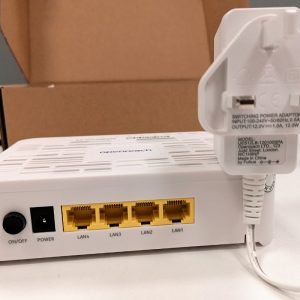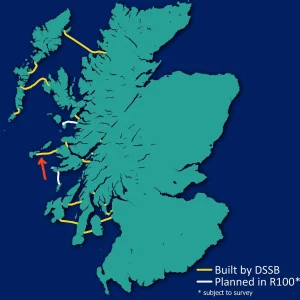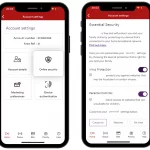Sponsored Links
UPD Ofcom Confirms UK Average Broadband ISP Download Speeds Hit 7.6Mbps
Posted: 01st Feb, 2012 By: MarkJ

 Ofcom, the UK communications regulator, has this morning published its latest biannual research into the country's national average broadband ISP speeds. The study, which is based on data from November 2011, found that consumers are achieving 22% faster internet performance than 12 months ago and the average download speed has risen to 7.6Mbps (up by 11% from 6.8Mbps last summer).
Ofcom, the UK communications regulator, has this morning published its latest biannual research into the country's national average broadband ISP speeds. The study, which is based on data from November 2011, found that consumers are achieving 22% faster internet performance than 12 months ago and the average download speed has risen to 7.6Mbps (up by 11% from 6.8Mbps last summer).As expected a "significant" gap still exists between what most ISPs are advertising (headline speed) to consumers and what is actually being received. The average advertised rate is now 16.3Mbps, which is an increase from 15Mbps last summer and still double what ISPs actually delivered to their customers.

The main reason for this gap between headline and real-world performance is the dominance of less reliable copper line based ADSL ('up to' 8Mbps) and ADSL2+ ('up to' 20/24Mbps) broadband services, which are highly susceptible to interference through poor home wiring and longer telephone lines (among many other things).
A simple breakdown of the results (below) shows the problem quite well. The average speed that at least half (50%) of connections obtained for an ADSL service was just 3Mbps (advertised as 8Mbps), which rises only slightly to 5Mbps for an ADSL2+ service (advertised as 20/40Mbps).

The good news is that the new generation of superfast broadband services ( FTTC , FTTP , Cable Modem ) from BT and Virgin Media can so far deliver on their promises. At present Virgin's service tends to cover half of the country and is focused in urban areas. Meanwhile BT's solutions can only cover 30% of the UK, reaching 40% later this year and 66% or more by 2015 (likely to go a lot further with government funding).
Ofcom's Chief Executive, Ed Richards, said:
"It is encouraging that speeds are increasing and that consumers have a real choice of broadband service. There is a real opportunity for consumers to look at the packages and deals in their area in order to receive the best value, speeds and performance available to them.
We can look forward to further increases in UK broadband speeds over the next few years. Most households in the UK can now access superfast broadband services, and these services are set to get faster still as Virgin Media aims to double the speeds of most of its cable services and BT aims to double the speed of its fibre-to-the-cabinet service from 40Mbit/s to 80Mbit/s."
"It is encouraging that speeds are increasing and that consumers have a real choice of broadband service. There is a real opportunity for consumers to look at the packages and deals in their area in order to receive the best value, speeds and performance available to them.
We can look forward to further increases in UK broadband speeds over the next few years. Most households in the UK can now access superfast broadband services, and these services are set to get faster still as Virgin Media aims to double the speeds of most of its cable services and BT aims to double the speed of its fibre-to-the-cabinet service from 40Mbit/s to 80Mbit/s."
Adam Scorer, Director of Policy at Consumer Focus, said:
"It’s good news that customers are getting faster broadband speeds. But there is still often a very clear gap between the maximum speeds advertised by suppliers and what people actually receive. People don’t expect to pay for what is advertised as a fast lane service and get a slow lane delivery.
Customers expect products to do what they say on the tin. It is disappointing that broadband suppliers are still using advertising that can mislead customers. We hope that new rules from the regulator coming into effect in April will tackle this and that enforcement action will be taken against any company which isn’t upfront and honest."
"It’s good news that customers are getting faster broadband speeds. But there is still often a very clear gap between the maximum speeds advertised by suppliers and what people actually receive. People don’t expect to pay for what is advertised as a fast lane service and get a slow lane delivery.
Customers expect products to do what they say on the tin. It is disappointing that broadband suppliers are still using advertising that can mislead customers. We hope that new rules from the regulator coming into effect in April will tackle this and that enforcement action will be taken against any company which isn’t upfront and honest."
Thankfully those who can't yet get a superfast service do have some support from Ofcom's Voluntary Broadband Speeds Code of Practice (Version 2), which requires member ISPs (Listed Here) to explain to new customers the access line speed that they are likely to achieve at home, and to try to resolve any problems when speeds fall significantly below the estimate.
According to the v2 Code, if the problem cannot be resolved then customers will be able to leave their provider, without penalty, within the first 3 months of a contract. Ofcom has recently commissioned another mystery shopper exercise to look at whether ISPs are "adhering to the spirit of the Code". This will be published in the spring.
Separately the Advertising Standards Authority (ASA) last year released a new set of guidelines that will clamp down on misleading broadband ISP promotions of "up to" internet access speeds and "unlimited" usage allowances (detailed here). This is will come into effect on 1st April 2012.
In line with this new guidance, using data from Ofcom's study, the industry average speed based on the 10% availability criteria would be 6Mbps for services currently advertised at ‘up to’ 8Mbps, and 14Mbps for services currently advertised at ‘up to’ 20/24Mbps. ISPs are not required to follow Ofcom's suggestion and have been allowed to set their own levels, which some fear could lead to abuse.
Jon James, Executive Director of broadband at Virgin Media, said:
"More and more people are choosing fibre optic broadband and making the most of superfast speeds. Virgin Media continues to deliver the UK’s fastest broadband, over and above what we advertise according to Ofcom, and we’re about to boost the speeds of millions of homes yet again with our doubling upgrade and the introduction of 120Mb.
It’s good to see Britain’s broadband speeds moving in the right direction and the new advertising rules will, for the first time, force our competitors to be more honest about their “up to 24Mb” claims. We hope they’ll try to keep up."
"More and more people are choosing fibre optic broadband and making the most of superfast speeds. Virgin Media continues to deliver the UK’s fastest broadband, over and above what we advertise according to Ofcom, and we’re about to boost the speeds of millions of homes yet again with our doubling upgrade and the introduction of 120Mb.
It’s good to see Britain’s broadband speeds moving in the right direction and the new advertising rules will, for the first time, force our competitors to be more honest about their “up to 24Mb” claims. We hope they’ll try to keep up."
Sadly Ofcom's speed study, which is based on performance tests from 1,710 homes (carried out via specially adapted routers), only covers the eight largest ISPs in the market (75% of UK residential broadband subscribers) and so we don't get a full picture. More details of the ISP specific results have been posted below.

It will be interesting to see what kind of impact the future superfast speed upgrades from Virgin Media and BT will have on these results, with both intending to roughly double the performance of their services. The latter's FTTC technology (being upgraded from 40Mbps up to 80Mbps) is far more susceptible to ADSL style distance vs performance limitations.
Ofcom UK fixed-line broadband performance - November 2011 (PDF)UPDATE 9:44am
http://stakeholders.ofcom.org.uk/binaries/research/broadband-research/Fixed_bb_speeds_Nov_2011.pdf
Ofcom also appears to have updated its interactive UK maps of fixed line broadband ISP availability, adoption and performance (original news) with ever so slightly more recent data from August 2011 - http://maps.ofcom.org.uk/broadband/ .
Search ISP News
Search ISP Listings
Search ISP Reviews
Latest UK ISP News








Cheap BIG ISPs for 100Mbps+
150,000+ Customers | View More ISPs
Cheapest ISPs for 100Mbps+
Modest Availability | View More ISPs
Latest UK ISP News
Helpful ISP Guides and Tips
Sponsored Links
The Top 15 Category Tags
- FTTP (6713)
- BT (3862)
- Politics (3032)
- Business (2731)
- Openreach (2626)
- Building Digital UK (2486)
- Mobile Broadband (2433)
- FTTC (2131)
- Statistics (2098)
- 4G (2061)
- Virgin Media (1997)
- Ofcom Regulation (1761)
- 5G (1691)
- Fibre Optic (1586)
- Wireless Internet (1581)
Sponsored
Copyright © 1999 to Present - ISPreview.co.uk - All Rights Reserved - Terms , Privacy and Cookie Policy , Links , Website Rules































